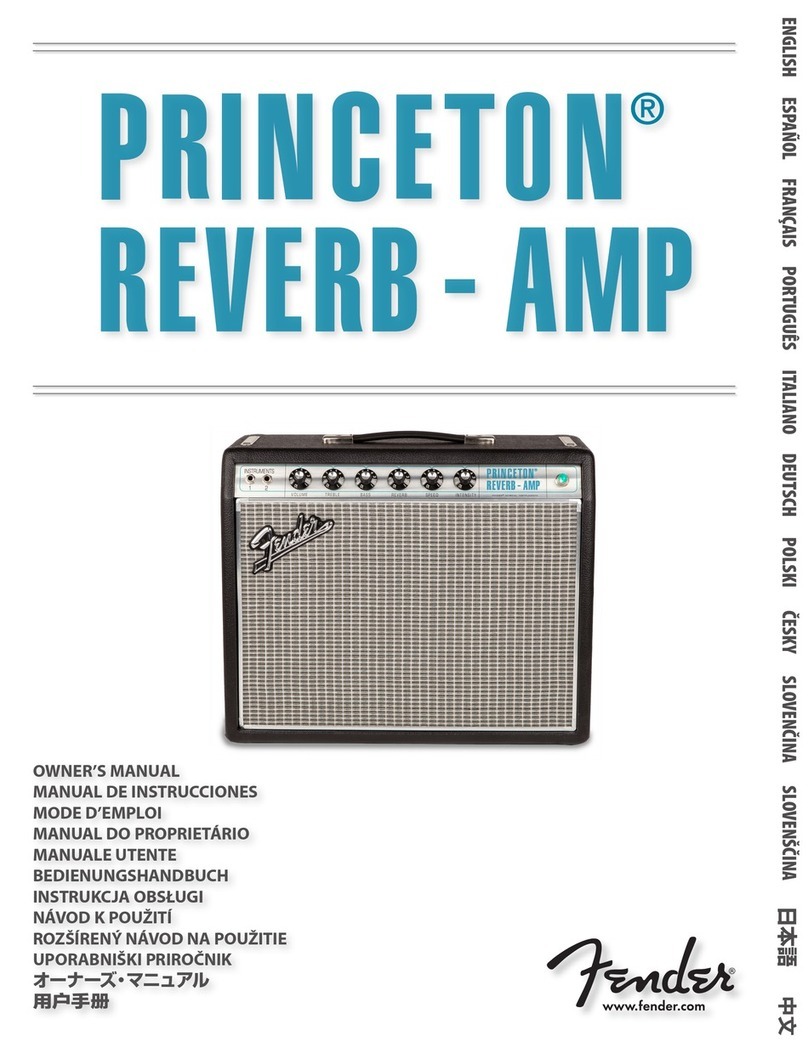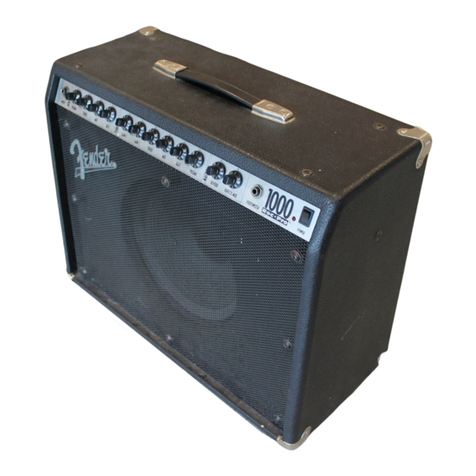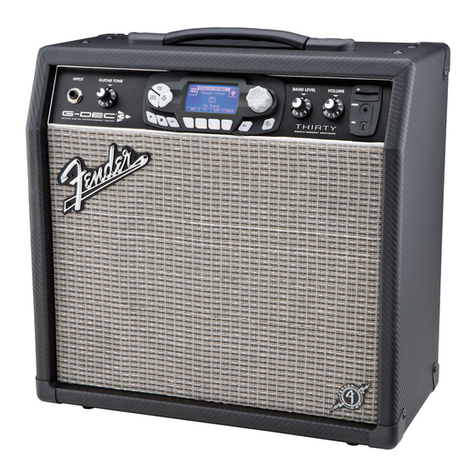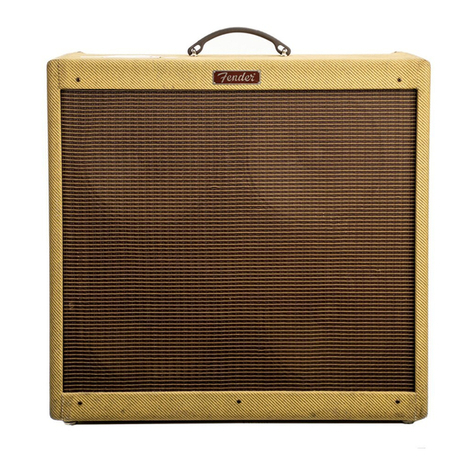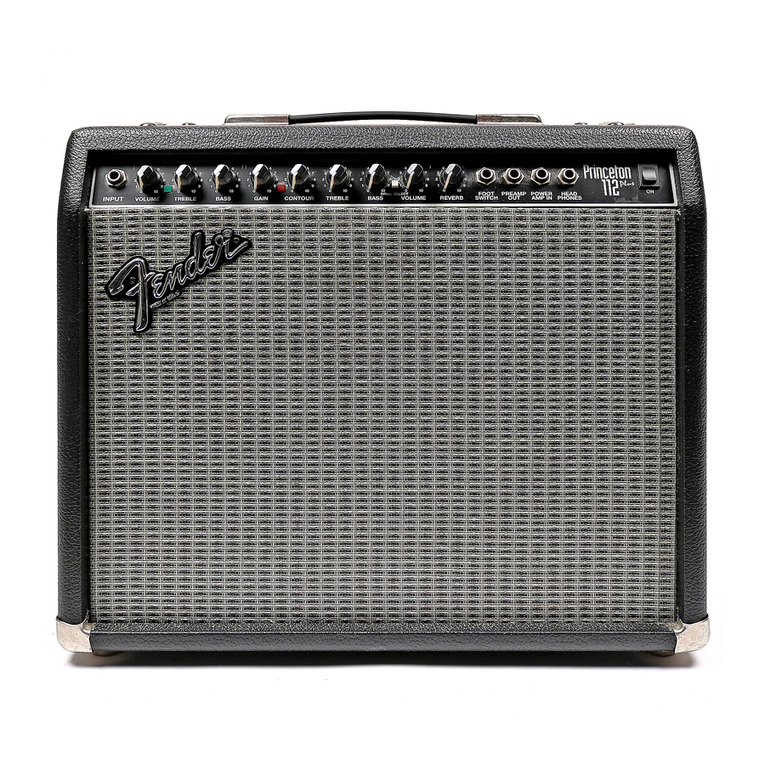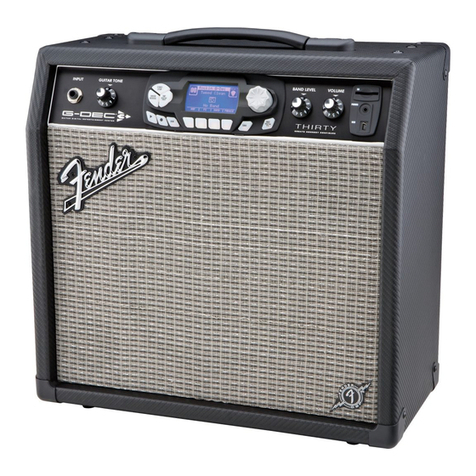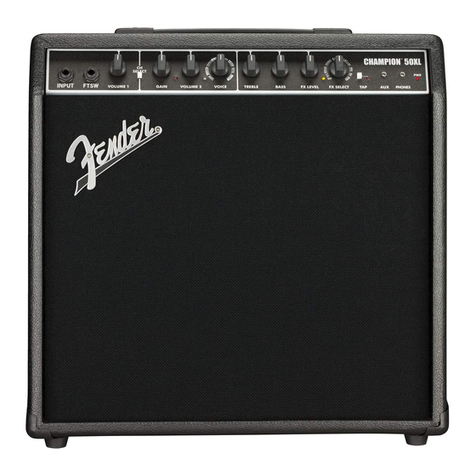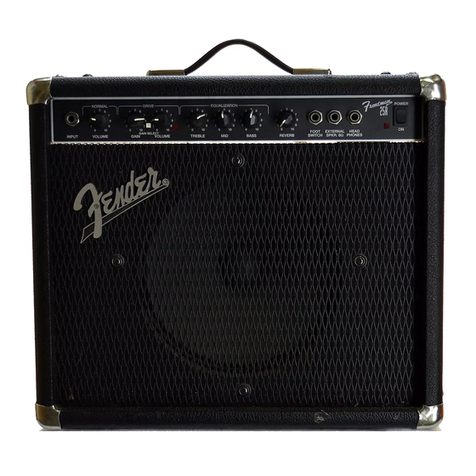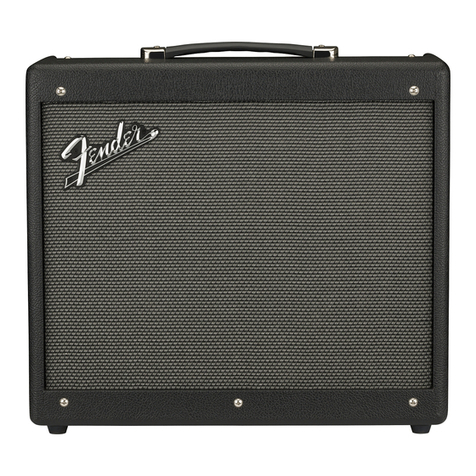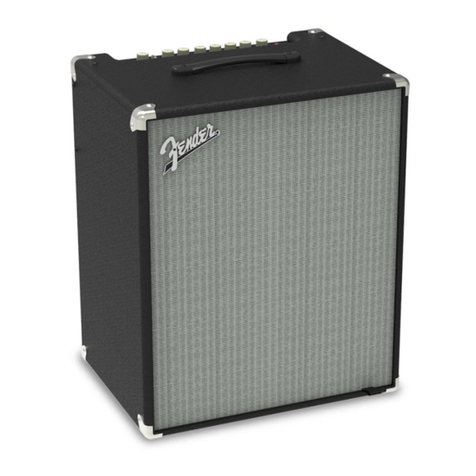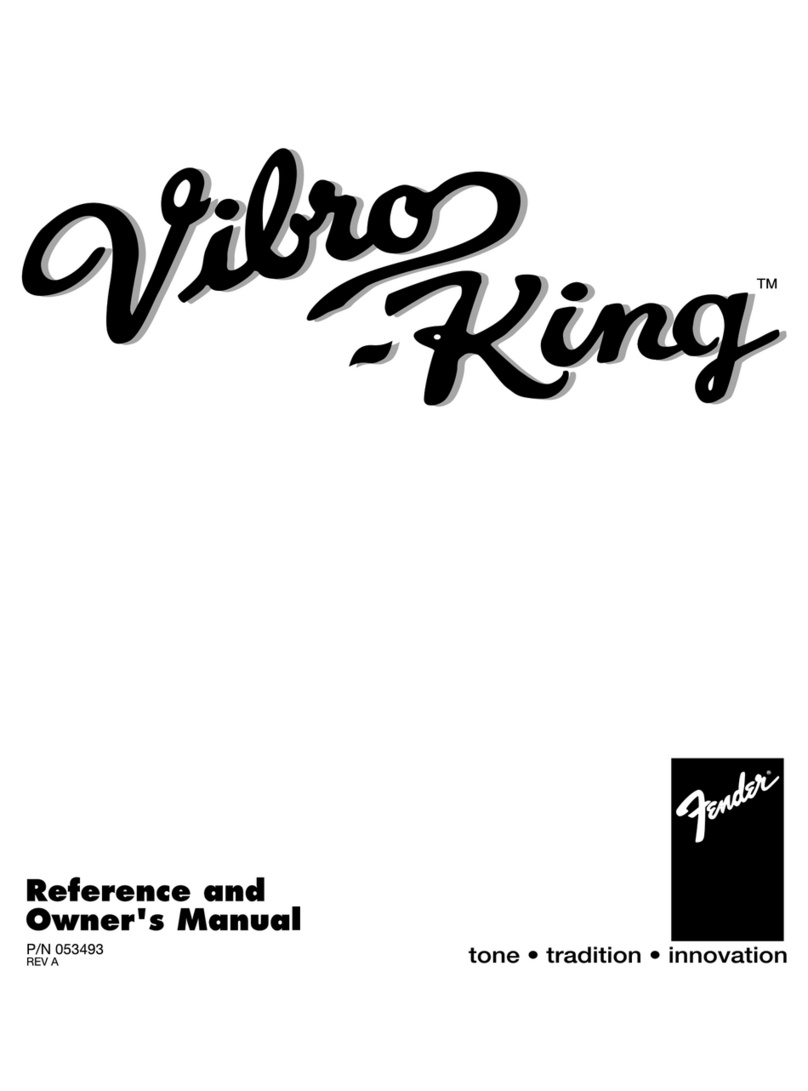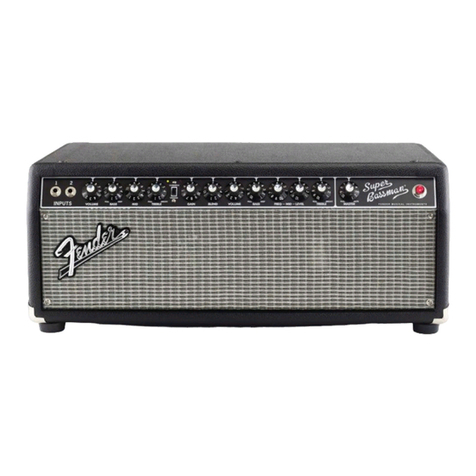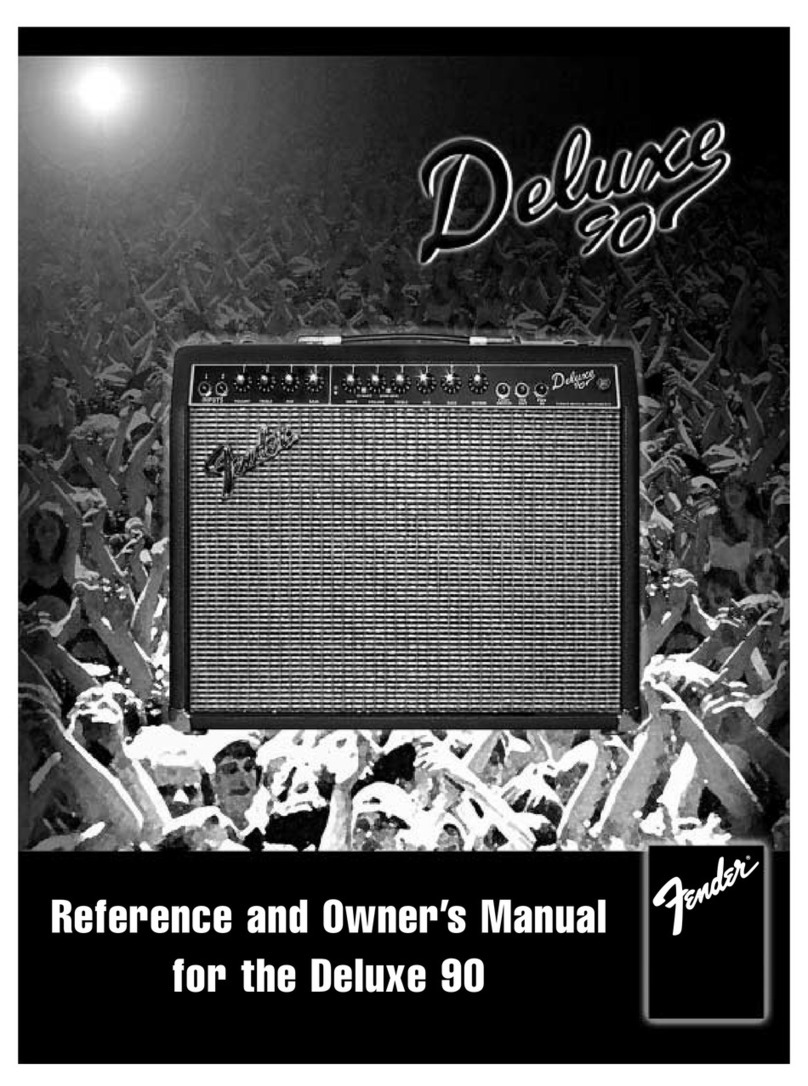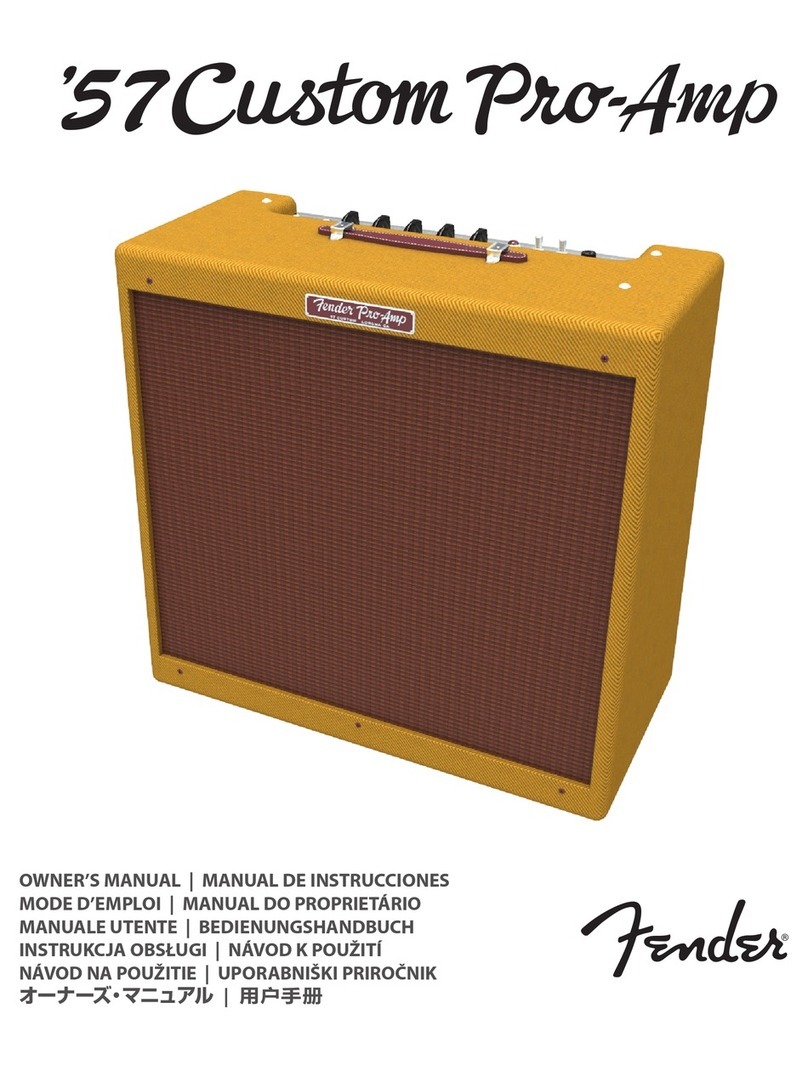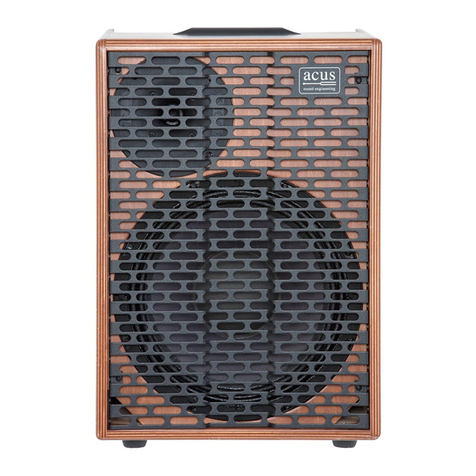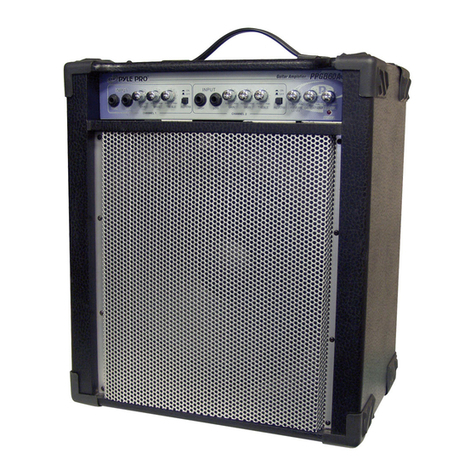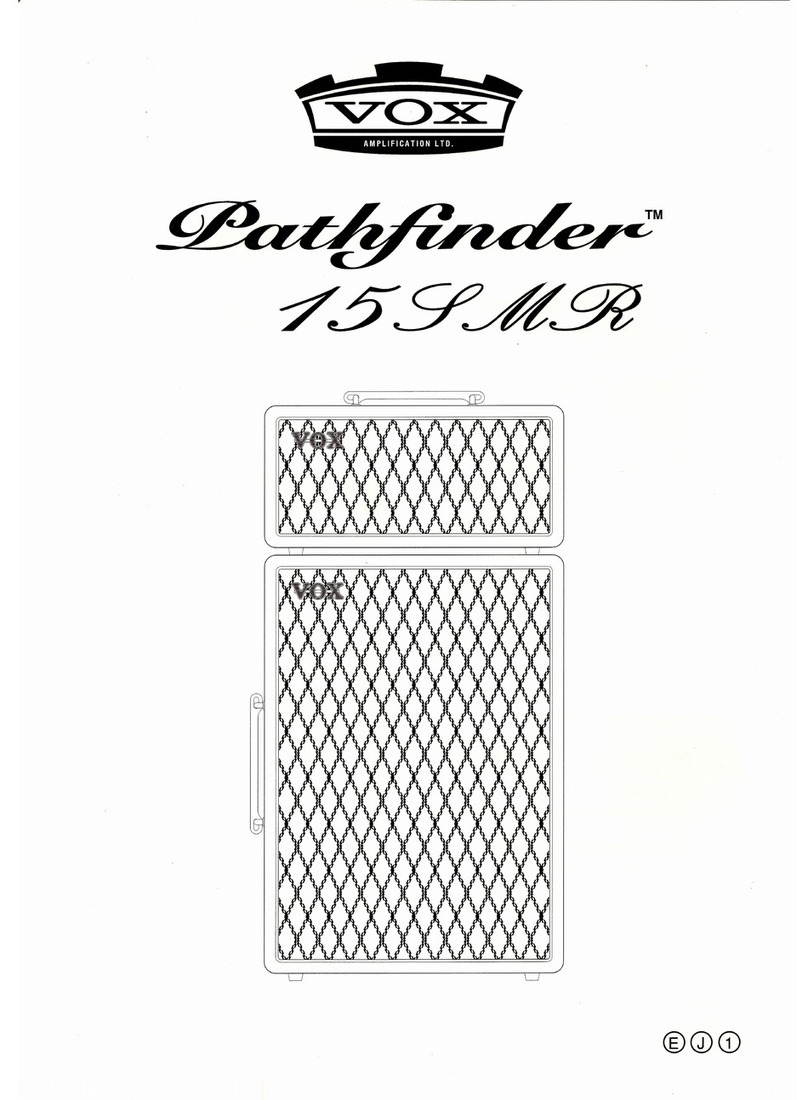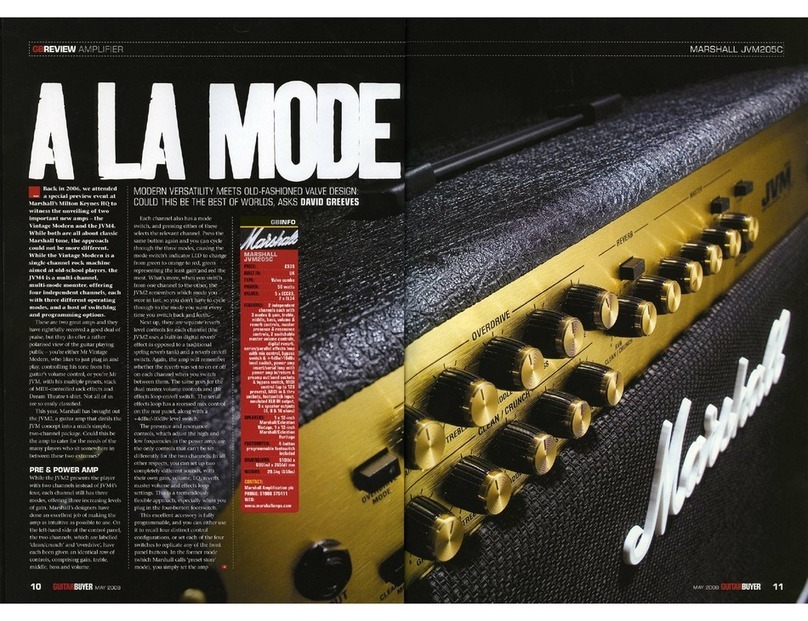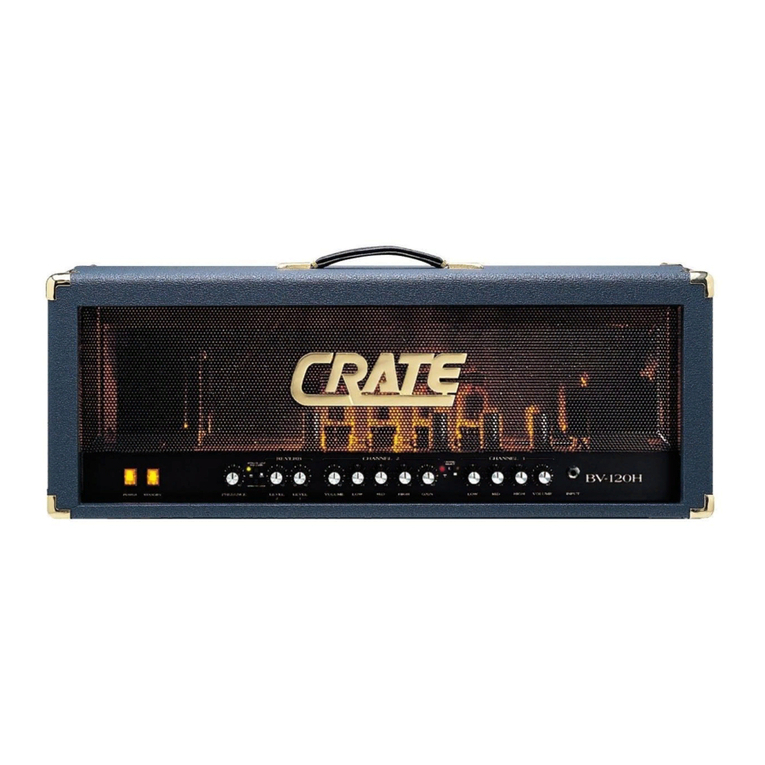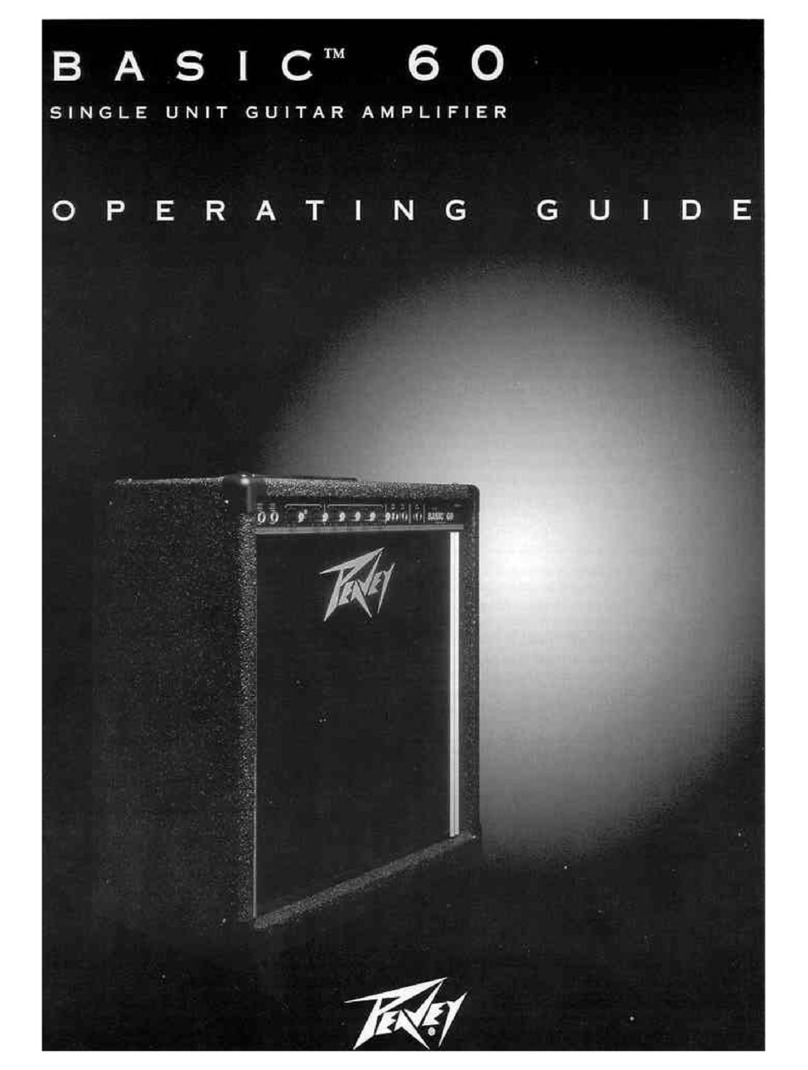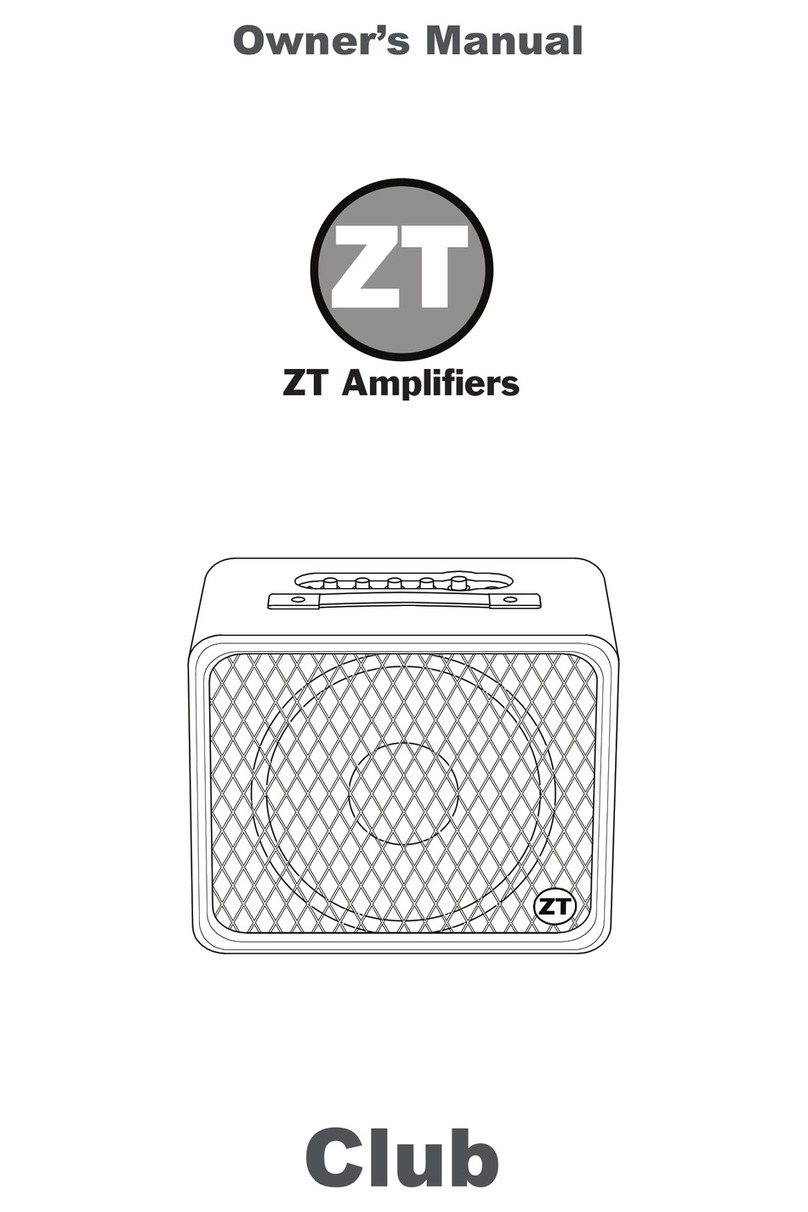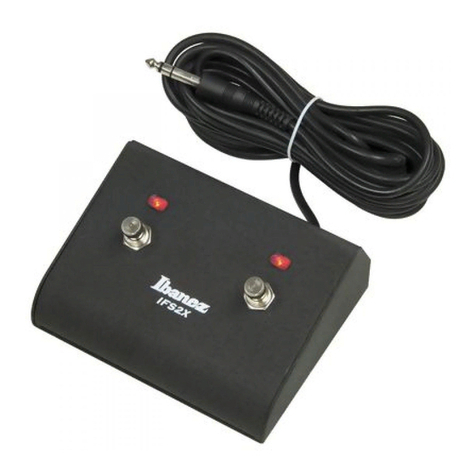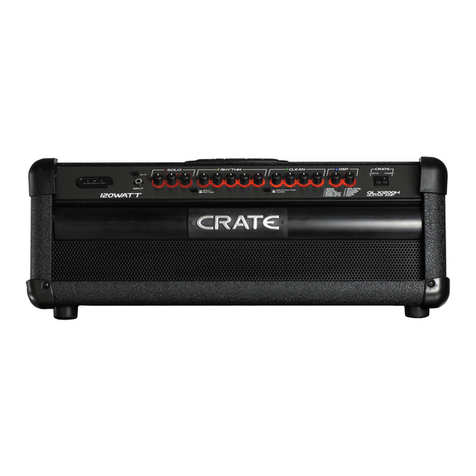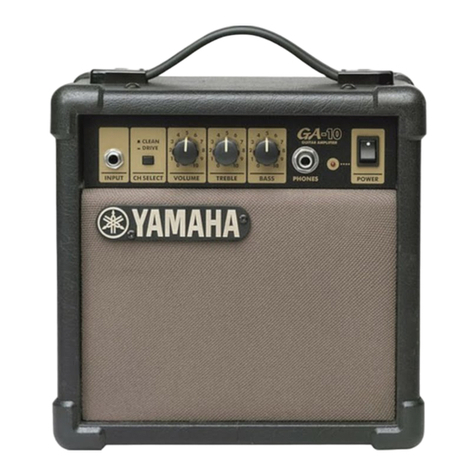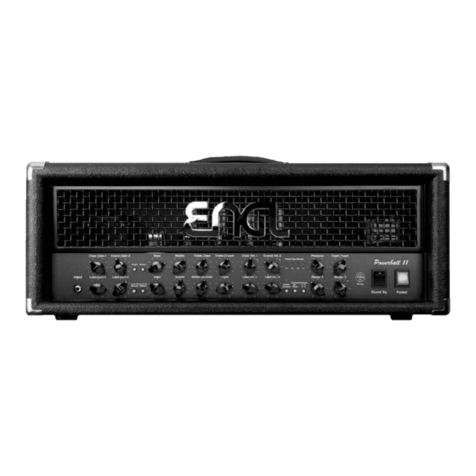
NOTE: BEFORE ATTEMPTING TO OPERATE YOUR
‘63 FENDER REVERB, turn the unit around and look
inside the back. You will see a metal lever near the back and
slightly left of center. This lever, when in the shipping or
traveling position, is pushed toward the front of the cabinet
and then to the right to lock. This lever pushes the inside of
the pan against a soft foam pad and prevents the springs in
the pan from being damaged due to excessive movement. To
release the lever to the playing position, push the lever
slightly forward and then to the left to unlock it. Let the lever
come back as for as it can to release the pan.
‘63 Fender Reverb top panel functions
A. POWER SWITCH-Turns the AC power ON and OFF.
When the switch is in the OFF position, the unit is
completely shut down.
B. FUSE-The fuse is in the AC supply of the amplifier and
will help to protect the amplifier and the operator in the
event of an electrical fault. If a fuse blows, it should only
be replaced with a fuse in accordance with the listing at
the fuse holder. If an amplifier repeatedly blows fuses, it
should be checked out by a qualified technician. UNDER
NO CIRCUMSTANCES should a fuse of a different type,
higher current rating, or a fuse bypass be used, as this
could damage the equipment and present a serious safety
hazard.
C. PILOT LIGHT-This lamp is illuminated when the
power is on.
D. DWELL-Adjusts the amount of signal sent to the reverb
pan. At low Dwell settings (two to four) the reverb sounds
much like a guitar played into a large room. At high
Dwell settings (above four) the reverb signal will start to
sound more “springy” or ‘twangy”.
E. INPUT-A high impedance plug-in connection for
instruments.
F. MIXER-The reverb “wet” signal and the ‘dry” signal are
mixed together at this control. The mixer adjusts what
percentage of the signal sent to the output jack is from the
reverb pan circuit compared to the dry signal. Higher
settings equal more reverb.
G. TONE-This control affects only the “wet’ portion of the
signal and acts much like the treble control on a guitar
amplifier. Turning the Tone control up allows more high
frequencies through from the reverb to the mixer control.
H. OUTPUT-This is the output jack that is used to send the
signal from the reverb unit to the amplifier.
Using your ‘63 Fender Reverb
The ‘63 Fender Reverb is designed to go between a low level
instrument (such as a guitar) and a high input impedance
amplifier (such as any Fender tube amplifier or the high
sensitivity input on any Fender solid-state amplifier). It
should be used only with the clean channel of the
amplifier as distorted reverb sounds very unnatural. If
you want to use the ‘63 Fender Reverb with high gain or
distortion, you may use either a distortion pedal inserted
before the Reverb Unit or connect the Reverb Unit in the
effects loop of the amplifier and use the high
gain/distortion channel of the amplifier. However, since
most of the sonic benefits of the ‘63 Fender Reverb result
from the fact that the reverb signal is generated before
the tone controls and preamp gain circuitry of the
amplifier, we do not recommend using it in the effects
loop.


